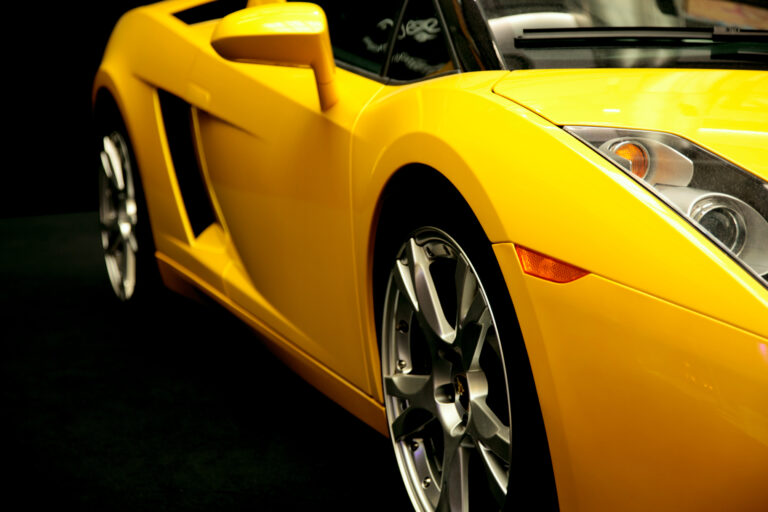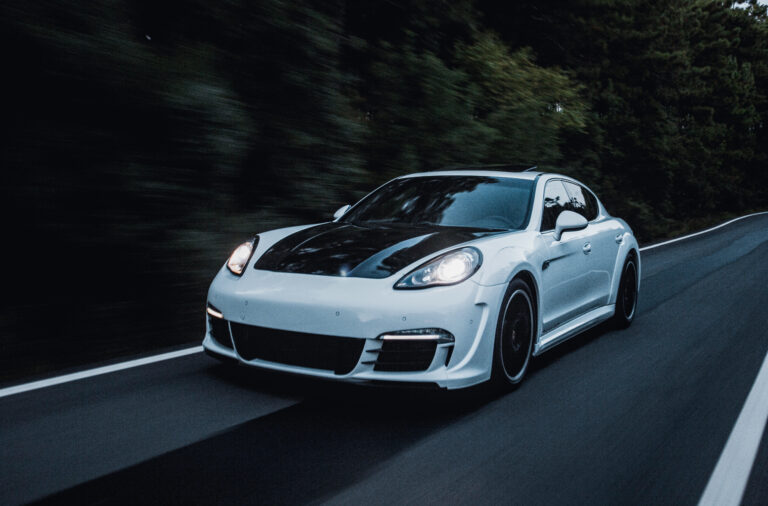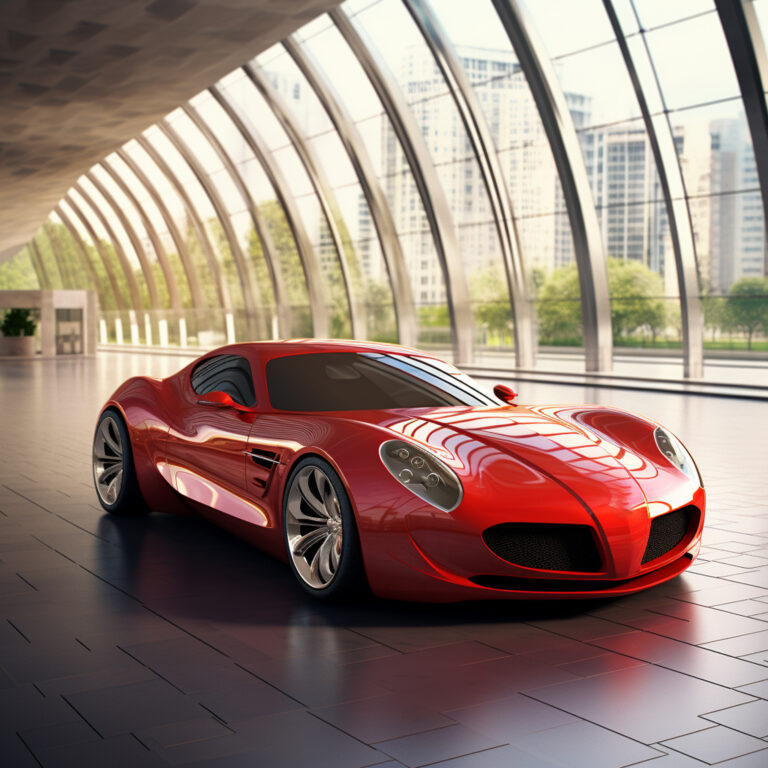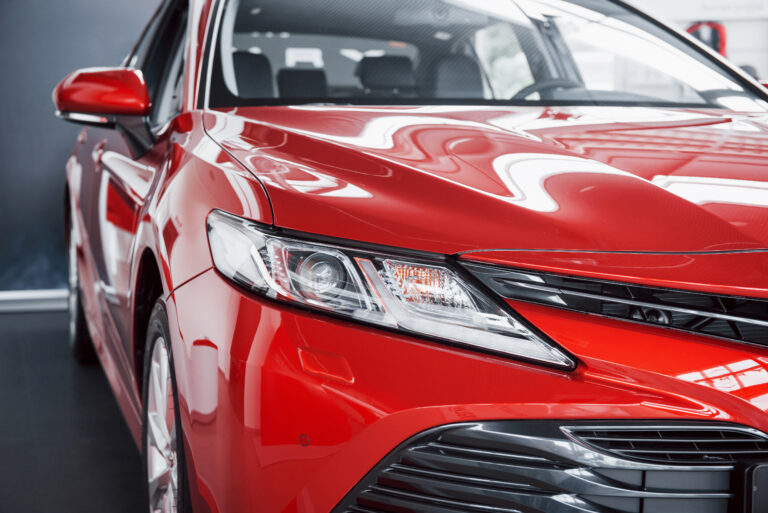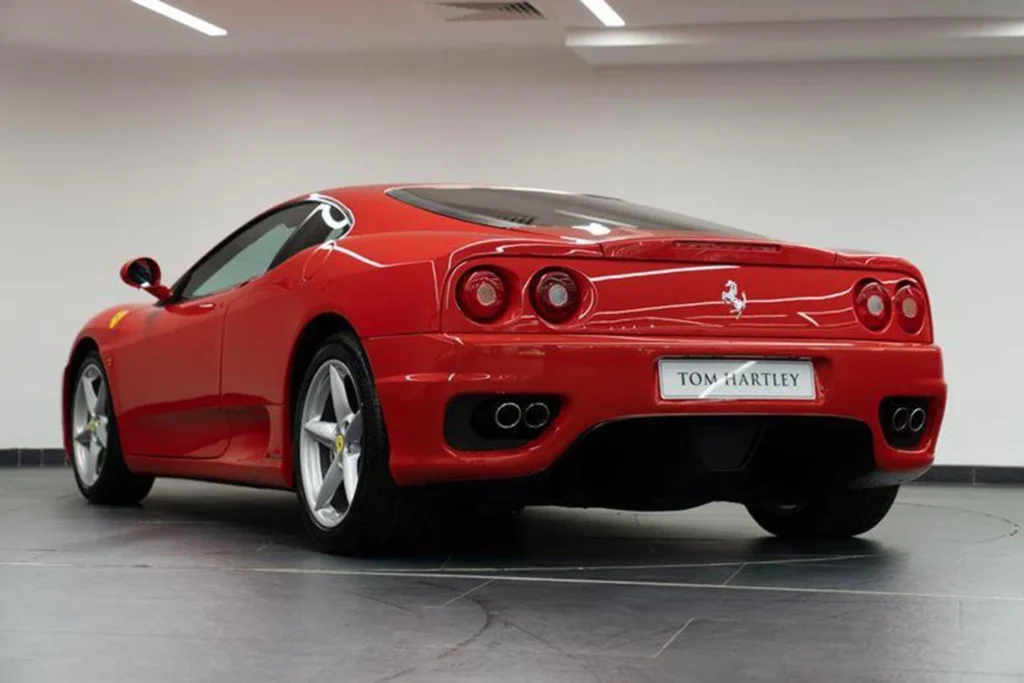
How Fast Is the Ferrari 360 Modena?
Ferrari Model 360 Modena is probably one of the most 2000s iconic sports cars. It replaced the Ferrari F355, and was a radical step forward both technologically and design-wise, as it took the best attributes of a Ferrari, with speed, and allied with advanced engineering by incorporating a modern look. However, at what speed are the Ferrari 360 Modena cars? What makes it so unique, even up to date, in the fast world of sports vehicles? So, we all might as well go under the hood, the technology, the machine itself, and its impact on the sports car industry.
What Is the Real-World Speed of the Ferrari 360 Modena?
Ferrari 360 Modena was made to entertain. It has an engine size of 3.6-liter V8, generating a power output of 400 horsepower and 275 lb-ft of torque. This engine makes the 360 Modena reach 0–60 miles an hour in a speed of 4.3 seconds, with a top speed of approximately 183mph (295km/h). These figures were impressive upon their release, and they still provide decent performance even today.
The 360 Modena is lively on the road. Its throttle reaction to the pedal is sweet, the exhaust note is classic Ferrari, and off-the-line acceleration is aggressive. Having a curb weight of only 1,390 kg (3,064 lbs), it provides a pure racecar feeling without reducing daily driveability.
What Kind of Engine Powers the Ferrari 360 Modena?
The Ferrari 360 Modena sits on the benchmark of a naturally aspirated 3.6-liter V8, which has a flat-plane crankshaft. This motor can spin it at the end of 8,700 rpm, and the feeling of driving is a response and exciting. It became the first V8 of Ferrari to have a full aluminum construction, both of its frame and body, thus making the car lose much of its weight.
The V8 has titanium connecting rods and dry sump oil lubrication, normally only used on race engines. These characteristics are such that they can guarantee high g-force and sustained performance of the track with the engine.
Gearbox and Transmission
The customer had a conventional 6-speed gated manual transmission or a Ferrari electrohydraulic F1-manual transmission to select. Its manually operated model especially appeals to the purists due to its hands-on and thrilling to handle, whereas the F1 transmission was lightning quick to shift and faster at the track.
Suspension and Handling
The 360 Modena has all-around 4-wheel independently-suspended, fully double-wishbone and coil-spring surprised. The car is also fitted with an electronically variable damper, which ensures that the damping is variable depending on the driving conditions, offering a generous balance between physical comfort and driving performance.
The car has sharper and accurate steering, which makes it easy to navigate along the twisty back roads or even on the racetrack. The aluminum chassis provides ta totally superb weight balance and plays a part in the sharpest manners of the vehicle.
Is the 360 Modena Still a Great Sports Car?
Although the Ferrari 360 Modena was produced in 1999, it stands well on its own when compared with most of the other sports cars of today. Although newer Ferraris such as the F8 Tributo deliver more horsepower and technology they provide, the 360 Modena delivers a pure, unadulterated driving experience, an experience that is becoming more common.
The 360 Modena does not come with a lot of electronics, as modern supercars are jammed with many driver aids. This provides drivers a pure mechanical interface with the road, and this is something that is highly regarded by enthusiasts.
Ferrari 360 Modena Technological Features
Introduced in 1999, the Ferrari 360 Modena was not only a brand-new model, it was a technological advancement of Ferrari. The 360 Modena featured world-leading innovations that not only enhanced its performance but also preconditioned the subsequent Ferrari developments. The major technologies that made it stand out were as follows:
All-Aluminum Space Frame Chassis
Co-developed with Alcoa, the 360 Modena became the first road car to be constructed with a full space frame of aluminum. This light (chassis) was 40 percent stiffer and 28 percent lighter than the steel structure in the F355. The result? Improved handling, distribution of weight, and subsequent enhanced backward and forward flexibility.
Drive by Wire Throttle System
The Modena brought in, instead of the usual mechanical linkage, a drive-by-wire throttle, that is, the gas pedal acted electronically to the engine. This enabled the engine to provide easier throttle response, better administration of fuel, and integration with the car’s ECU and the traction systems.
Optional F1-Style Paddle-Shift Transmission
In Formula 1 terms, Ferrari provided an optional F1-style electrohydraulic gearbox. It enabled drivers to shift their gears within 150 milliseconds, compared to any manual ever, which was far slower. This was an eye-opening experience to track enthusiasts and those with a passion to drive modern cars, especially with the car engine map that exhibited an aggressive nature.
Adjustable Sport Suspension System
The suspension on the 360 Modena used an adaptive electronic suspension. It continually recalculated the damping force on each wheel relative to road conditions, driving style, and load. This made the car a two-faced one that was comfortable cruising in the city but sharp in spirited corners.
High-end Brakes and Stability Control
To increase the level of grip and control, the 360 Modena was fitted with ASR (Anti-Slip Regulation), which was a precursor of the traction control of the Ferrari. This system stopped the spinning of the wheels at fast acceleration and provided traction in slippery surfaces–without removing any of the fun of driving out of control.
Aerodynamic Enhancements
Admittedly not strictly speaking electronic, the underbody aerodynamics of the Ferrari 360 Modena are to be mentioned. It had a flat undertray and a rear diffuser to cope with the airflow and generate actual downforce, without having a large rear wing. This contributed to the stability at high speed and the maintenance of the handsomeness of Ferrari.
Engine ECU Integration
The electrical system was headed by a complex Bosch Motronic ME 7.3 ECU taking care of fuel injection, ignition timing and valve timing which controlled the V8 engine. This enabled precision fine-tuning, superior emissions reduction, and lifetime performance on the engine, at the same time giving the Ferrari trademark rumble.
Cumulatively, these were technologies, and the Ferrari 360 Modena boasted to be the most balanced, responsive, and technologically advanced Ferrari available currently.
How Much Is a Ferrari 360 Modena Worth Today?
Currently, the used 360 Modenas can be had between prices of 84,700 dollars and exceeding it, depending on its condition, as well as its mileage and type of transmission. When looking at an average 2004 Ferrari 360 Modena in good condition, you could, on average expect to pay approximately 95,300.
There is a higher demand and higher price of manual transmission models, particularly in the case of collectors. The Ferrari 360 Modena has long since become an increasing classic in its own right, and a pristine model is increasingly difficult to find.
What Makes the Ferrari 360 Modena Special in Ferrari History?
The Ferrari 360 Modena is not merely a successor to F355; it is a revolution in the manner that Ferraris are manufactured and driven. The fact that it is part of the history of the brand is colossal for several reasons:
The original Falco
The 360 Modena was the turning point for Ferrari in the modern world. It was a high-tech car with an aluminum body, drive-by-wire technology, and an F1-derived transmission that boasted the old Ferrari spirit. It was the introduction to the 21st-century engineering philosophy of Ferrari–a bridge between the present and the future.
Pininfarina revolutionary Design
The 360 designed by Pininfarina was a definite contrast to the angular nature of the Ferraris of the 1980s through to the early 90s. The large rear glass engine cover and round flowing lines introduced the element of elegance and visibility. It predetermined the timber of the 458 Italia, F430, and subsequent models.
Pure Driving Feel on the Changing Market
A gated 6-speed manual, the last gated Ferrari, was an option on the 360 Modena. In the world that is becoming automated, it provided a raw driver experience to the enthusiasts as they got a rare chance to engage. Even the new F1 transmission was rough back then, and also, the driving experience is difficult to generate nowadays.
Affordability and Accessibility
While still expensive, the 360 Modena opened the door for more enthusiasts to enter the Ferrari world. It became the poster car for many young fans and remains one of the more affordable “entry-level” Ferraris on the collector market today. This broadened the brand’s reach and inspired a new generation of buyers.
Bridging Analog and Digital
Perhaps its greatest achievement is that it lives in both worlds. The 360 Modena still has the analog feel that purists love no digital dashboards, no overbearing software—but it also introduced tech enhancements that made it safer, faster, and easier to live with. It’s a beautiful balance that’s rare today.
Racing Pedigree
The 360 Modena laid the groundwork for track-dominating versions like the 360 Challenge and 360 GT, making it an important piece in Ferrari’s racing DNA. Its chassis and engine were capable of far more than street duty, and many continue to race in classic series today.
In short, the 360 Modena is a milestone, not just a successor to the F355, but a foundational model that helped define Ferrari for the next two decades.
Final Thoughts
The Ferrari 360 Modena is more than just a fast car. It represents a time when Ferrari was redefining itself for the modern age, balancing raw driving pleasure with emerging technologies. With a powerful V8, innovative features, and timeless design, it continues to capture the hearts of enthusiasts and collectors alike.
Whether you’re considering one for its performance, its potential as a collector’s item, or simply for the joy of driving. The Ferrari 360 Modena remains one of the most compelling sports cars of its era and perhaps one of the last truly analog Ferraris in a world going digital.
Frequently Asked Questions
What is the 0-60 mph of the Ferrari 360 Modena?
It takes close to 4.3 seconds to accelerate to a speed of 0 to 60 mph.
What is the maximum speed of the Ferrari 360 Modena?
The top speed of the car is approximated to be about 183 mph (295 km/h).
Is the Ferrari 360 Modena a reliable car?
Yes, in particular, when well taken care of. It is proven since it is more reliable than some of its predecessors, Ferraris have been.
Does 360 Modena have a manual gear?
Yes, it came with a 6-speed gated manual or as an optional F1 automated manual transmission.
Is the Ferrari 360 Modena worth buying?
Well-maintained manual cars are getting steadily more expensive. It is marching towards being a popular contemporary classic.

